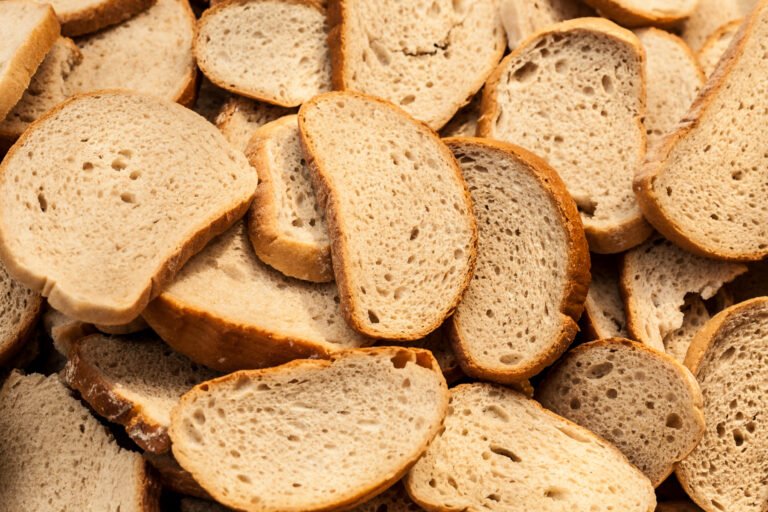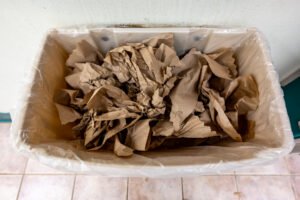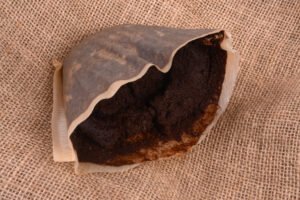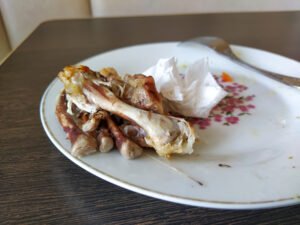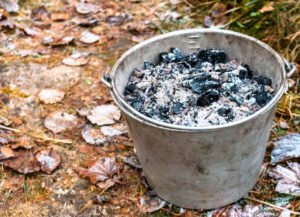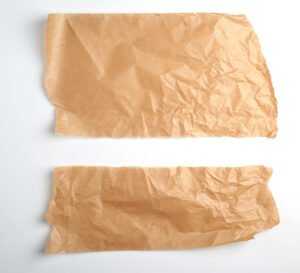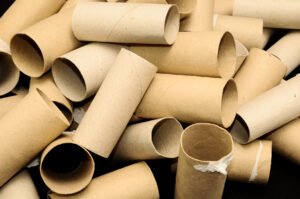When people think of composting food scraps, they mostly consider fruit and vegetable waste. But there’s something you eat almost every day that is biodegradable, but you may not have considered composting yet. Yes! We’re talking about bread. So can you compost bread? If yes, how so?
Key Takeaways
- Yes, bread is compostable as it is soft and breaks down quickly by absorbing moisture. It keeps the compost pile balanced, and its humus adds organic matter to the soil.
- You can compost fresh or moldy bread through Hot Composting, Tumbler Composting, and Bokashi Composting, which are explained in steps in this article.
- The spongy texture of bread allows it to absorb the excess moisture from the compost heap. It has many other benefits, which you can find below.
- It’s crucial to bury bread deep in the compost bin and cover it with brown materials as it is very likely to attract pests and animals.
If you want to learn everything about compost bread, continue reading!
How to Compost Bread?
Composting bread is a great way to reduce food waste and get nutrient-rich organic matter for the soil. But bread may invite pests and bugs, so you must take precautions while composting them.
Bread can be composted by the anaerobic method in bokashi bins or through the hot composting method in compost piles or tumblers. It also decomposes through cold composting but takes longer to break down.
Composting Bread through Hot Composting Pile
Using a bokashi bin or compost tumblers is a great way to get rid of pests. But if you already have a hot compost bin or pile and are planning to add bread to it, worry not. Follow the below-mentioned steps to compost bread in your compost pile.
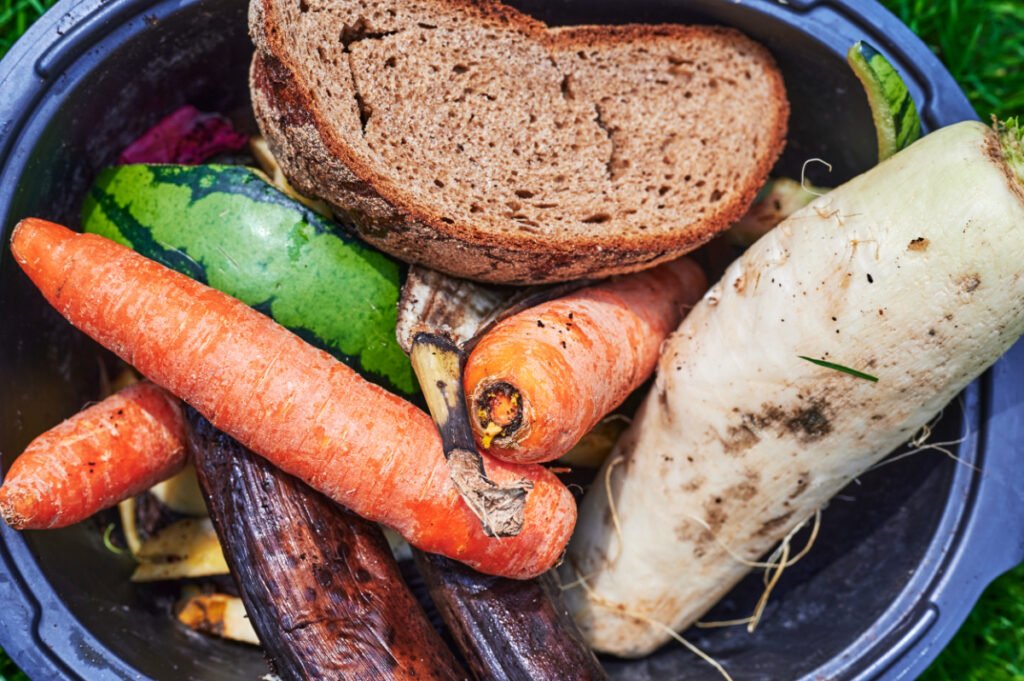
Step 1. Cut the Bread into Smaller Pieces
Chop the bread into smaller pieces to hasten its decomposition. You can also soak the bread before adding it to the compost pile. This will help the composting microbes break it down faster.
Step 2. Add the Bread to the Center of the Compost Pile
Dig a hole in your compost pile using a stick or pitchfork and add the bread pieces in the center. Now cover them with other brown materials.
If you’re starting a new hot composting pile to compost bread, remember to add the bread at its center, between the green and brown layers.
Step 3. Add a Layer of Soil or Manure at the Top
To further expedite the decomposition, you can seal your compost pile with a layer of manure or soil. This will also give structure to your compost.
Step 4. Aerate the Pile
Remember to turn your pile to aerate it. Aeration helps distribute oxygen equally in the compost bin so the microbes can work joyfully on the bread crumbs and other food waste.
Bokashi Method of Composting Bread
Bokashi composting is the best method to compost bread. The useful bacteria in bokashi bran will break down the bread quickly, and when the fermented waste is buried in the soil or composted for further decomposition, it won’t release any odor or invite pests.
Moreover, you can add fresh bread and stale and moldy bread in bokashi buckets. Cooked food, baked goods, dairy products, pasta, and other rotten food can also go in it.

Now let us see how to compost bread through bokashi composting.
Step 1. Break the Bread into Small Chunks
Collect the stale and moldy bread from your fridge and break them into small pieces.
Step 2. Set Up your Bokashi Bin
Get a bokashi bucket and bran from a gardening store or online and place it in your kitchen or backyard where there is no direct sunlight.
Step 3. Add Bread to Your Bokashi Bin
Add all the bread pieces and other bread products you have collected along with the kitchen scraps like fruit and vegetable waste, eggshells, fish, and chicken bones to your bokashi bin. Don’t forget to chop the food waste before tossing them in.
Step 4. Add Bokashi Bran
Now it’s time to add a firm layer of bokashi bran. The bran contains active microbes and acts as an inoculant for fermentation.
Then press the food materials to remove the air pockets and close the lid.
The composting material will only ferment in the bokashi bins. You then need to add this fermented waste to your compost bin to get the finished compost.
Step 5. Drain the Bokashi Tea
Bokashi buckets also give liquid fertilizer along with fermented food, which can be used for plants once diluted. You can collect this liquid or Bokashi Tea every 1-2 days.
Step 6. Bury or Compost the Leftover Material
Fermentation of bread scraps and other food waste will be completed within two weeks. Then, collect the pre-compost from the bokashi bins and add it to your compost pile or bury it in the soil.
After the complete decomposition, the finished compost will be ready in around two weeks.
Composting Bread Through Tumbler Composting
Composting in tumblers is another great way of composting bread. The closed containers keep the pests at bay and the temperature high, helping the bread decomposition expeditiously.
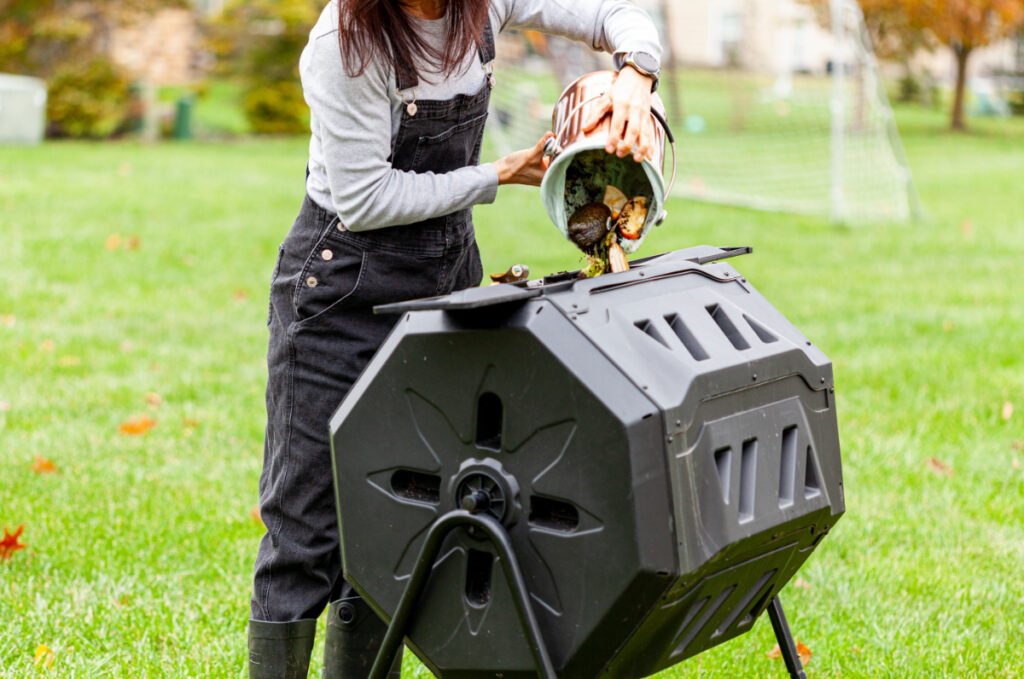
Here is a step-by-step guide to composting bread using compost tumblers:
Step 1. Set Up Your Compost Tumbler
Get your compost tumbler online or from the market and place it in a shady part of your garden.
Step 2. Collect Green and Brown Materials
Gather other green materials like grass clippings and kitchen scraps you want to compost with bread and cut everything into smaller pieces.
Then collect some brown materials like wood shavings, shredded paper, shredded cardboard, wood chips, paper towel, sawdust, or any other yard waste.
It is recommended to add one portion of Nitrogen and two portions of Carbon materials to make a nice balance. When adding green materials, remember that bread also contains Nitrogen, and you need to segregate waste accordingly.
Step 3. Batch Your Composting Materials
Mix all the materials and add them to the tumbler. It is best to add the stock in batches as the heat may escape if you open it each time you collect some waste.
So fill the tumbler until it is 80% full, give it a quick mix and close the lid.
Step 4. Turn the Tumbler Every 3-4 Days
Turning helps mix the materials well and generates heat inside the tumbler. As this is a hot composting method, bacteria respond well to increased heat. Turning the tumbler will also aid in aeration and speed up the cooking.
While composting bread in tumblers, you will get the finished compost within 2-3 weeks, which you can use in your garden beds to fertilize the soil.
Benefits of Composting Bread
According to Statista, food waste accounts for an estimated 9% of global food system greenhouse gas emissions, which was about 17.9 billion metric tons of CO2 equivalent a few years back. So minimizing food waste is the need of the hour.
Since fresh bread is among the most consumed foods globally, we need to consider composting it when it turns stale or moldy rather than sending it to landfills. This indeed will help minimize food waste and protect the earth.
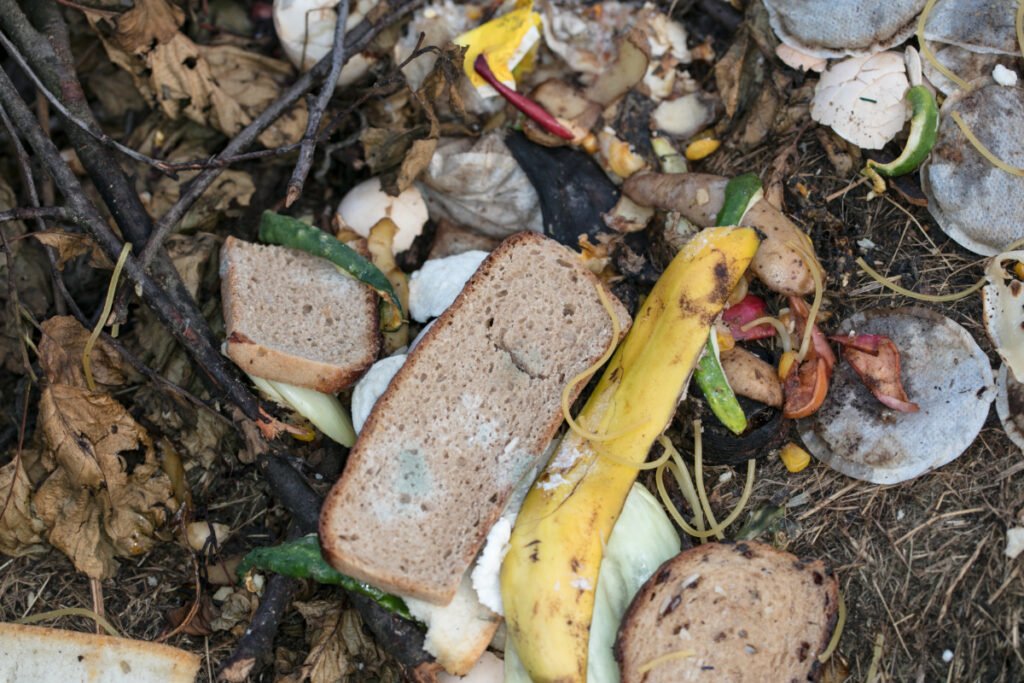
Still confused about whether to compost bread or not? Below are some benefits that will convince you to compost bread.
- Bread breaks down quickly in your compost pile, making them an excellent composting ingredient.
- Composting bread is environmentally friendly. By this, you can reduce your carbon footprint.
- Bread is a nitrogen source that provides proteins and amino acids to the compost and helps plant growth.
- Compost made of bread helps to maintain soil moisture.
- Bread soaks up excess moisture in the compost pile and helps to maintain a good balance.
- Composting bread is easy and saves you from buying costly fertilizers.
Additional Tips for Composting Bread
Bread is a source of carbohydrates and might attract rodents and insects to the compost pile. While the pests may not cause any significant harm to your compost, it’s difficult to manage them once they start breeding.
So it is crucial to take a few measures while composting bread. Here are a few tips you need to follow while composting bread:
- Only compost plain bread. The bread containing any sugary dressings like jam, sauce, cream, or any desserts like sweet buns is not suitable for your compost.
- Look for plastic coverings sticking to the bread and avoid tossing them into the compost bin.
- Break the bread into small pieces before adding them to the compost bin.
- Mix the bread with other composting materials to balance the nutrients in the finished compost.
- Add small quantities of bread scraps to your compost pile.
- Use a compost bin with a lid to help reduce foul odor and keep the pests away.
- If composting openly in a compost pile, bury the bread in the middle of your compost heap to prevent the pests from identifying them.
- Bread may absorb water from the compost and make it dry. To avoid this, soak the bread before adding it to the compost pile. The bread will then act as a sponge, retain moisture, and break down quickly.
- Add manure or garden soil on top of your composting materials to escalate the composting process.
Can I put moldy bread in compost?
Yes, moldy bread can be composted as mold is the natural part of decomposition and indicates that the fungus has already started its action. So adding moldy bread to your compost will accelerate the composting process.
How long does bread take to decompose?
Bread is among the quickest foods to decompose. They take up to 2-3 weeks or less to decompose under ideal conditions. Remember to add them in small chunks and place them in the center of your compost pile to carry the action quickly.
Can you add bread to your worm bins?
It’s not harmful to add bread to the wormery if it is in limits. But be careful while adding moldy bread to your worm bins. Though worms love to eat mold fungus, it might harm them. So it’s better to add the bread in moderation. Also, add other food scraps to the bin with bread to maintain balance and keep the worms active.
Will bread attract pests?
Yes, composting bread may attract pests like rodents, insects, birds, and sometimes animals. So it is better to bury them deep in the compost pile and cover them with brown materials to keep the pests away.
Is bread green or brown compost?
Bread is rich in Nitrogen and is considered a green material for composting. So whenever you compost bread, remember one-third of your composting materials should be green materials, and the rest should be Carbon-rich materials. So mix the bread with other brown and green scraps for the perfect balance.
What is the best type of bread to compost?
Moldy and stale bread is considered the best type of bread to compost. Since moldy bread indicates that decomposition has already started, they are the easiest and quickest to compost.
Is dairy-based bread good for compost?
Dairy-based bread may contain butter, milk, and cheese that has a lot of fat and produce foul odors. This will impede decomposition and may attract scavengers. So it is ideal to avoid putting any bread containing dairy in traditional composting methods. However, this cannot be true in the case of bokashi composting, as dairy products can go well in bokashi bins.
Can you compost bread crumbs?
Yes, you can compost bread crumbs. They are good to go to your compost bin as they are broken pieces of bread.
Can you compost bread dough?
Yes, like bread, the dough is also compostable. But it is prone to pest attack as it contains starch. So remember, you need to bury the dough in the middle of your compost pile and cover it with brown materials.
Can you compost pasta?
Pasta is an excellent composting material when it is plain, raw, and uncooked. However, avoid adding pasta made with sauce and cream as it contains dairy and attracts rodents and insects. Also, add the pasta in moderation and bury them inside the compost heap for best results.
So if you were wondering what to do with the stale or moldy bread lying in the corner of your kitchen, don’t have a second thought. Just cut the bread, toss it into the compost pile, tumbler, or worm bin, and watch it turn into nutrient-rich brown humus for your plants.
And if you are wondering what to do with the eggshells piled up in your kitchen garbage bin, hop on to our detailed guide to learn how to compost eggshells.
Happy Composting!
